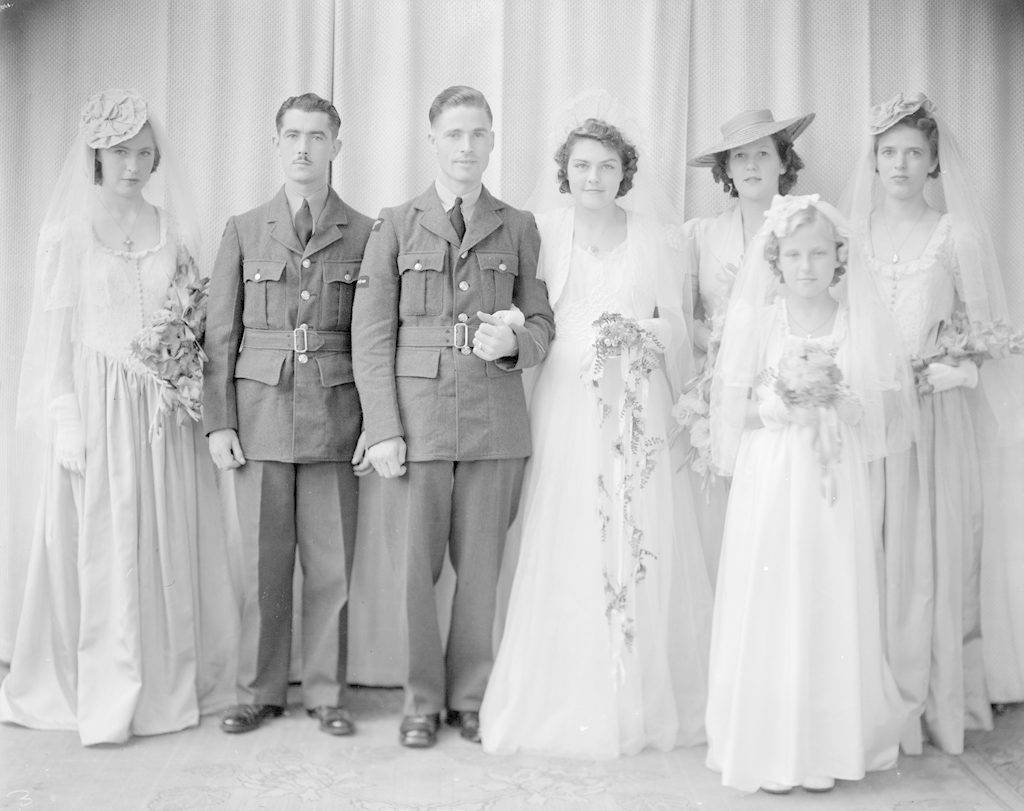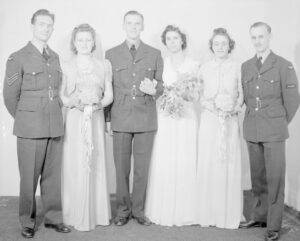Marriage is a sacred affair, and one needs to be thoroughly confident of their decision before committing to someone. However, World War 2 and marriage had separate definitions. Suddenly, young couples were hurrying to settle down, and churches were running out of dates for the same. But what was all the fuss about? Why was it difficult for the couples to wait until the war ended, and how did the government react? You will be able to find it all within this space.
Marriage During World War 2 The Social Picture
With the men having to march into the war quickly, in World War 2, couples had no time to plan and arrange for their big day. Often, churches were replaced by personal homes, funeral chapels, and civil offices.

There were instances of couples tying their knot while the groom returned home on a three to four-day pass. So here are all the reasons explaining the rise in marriages during World War 2:
- Men had the severe urge to stabilize the relationship and make their better half feel secure before the other marched into war.
At the initial stage, no one knew how long the war would last. - On the other hand, young women between 17 to 22 considered this time a “now or never” situation.
- Also, according to some social psychologists, sheer peer pressure and an urge to abide by societal trends did make war marriage all the more essential.
World War 2 Brides Facts
The atrocities of the war could not stop the couples from celebrating their big day. Wartime weddings, though rationed, did have a little bit of everything. From cakes to gowns, the Second World War had a unique style for the world to rejoice and celebrate.

Second World War And The Wedding Attire
- With clothes rationing hitting the market, silk and other extravagant products are used.
- The bride’s wedding gown was made from her fiancé’s war parachute. That is because silk as a product was light in weight, strong, and resistant to fire.
- Modern-day wedding dresses are white, and it has a lot to do with the parachutes during World War 2 being white. There is no specific reason known as to why the parachutes were white. Possibly because the military didn’t want to waste money on coloring or because it was easy to camouflage.
- World War 2 brides wore minimal and short dresses, making it easy for them to ride bikes to the city hall or the church.
- The wedding dresses from World War 2 are now part of the gallery in several museums across the globe. The Don F Pratt Museum, the Victoria and Albert Museum in London, and the Museum of Imperial War in London.
- The war’s end brought new hope, and Christian Dior’s “New Look” of wedding dresses with pronounced shoulders, small waist, bust, and standing-out hips.
Second World War And The Wedding Scenes
Budget, catering, wardrobe, and gifts in a wedding were given special attention during World War 2.
- Under the war, marriages occurred in the groom’s hometown when he traveled to his bride or in the chapels of a military base when the girl traveled to see her husband.
- There are instances of around 33 marriages taking place on a single day.
- Also, the bride’s family accompanied her on her way to the army base and brought her back. The war duties stopped the groom from returning or going on a honeymoon.
- In terms of the guests at the wedding, both servicemen and civilians are invited. Now, the ones in service wore their blue suits, and civilians were asked to wear dark colors to match up.
- For the groom posting in navy, the wedding suit color was white, and others were also made to do the same.
- Couples continued to treat their guests with the best food and catering during the war.
- One could order catering, even 24 hours before the wedding, and arrangements were possible.
- For the sitting arrangements, caterers did provide tables, chairs, serving accommodations, and waiters.
- The most sorted-after menu during the war goes as follows – frosted cakes, assorted canapes, lobster, chicken salad, lobster, champagne, cocktail, and wedding cake.
- Under the virtue of food rationing, the supply of sugar was short. That way, cakes at weddings had simple frosting. The dessert menu highlighted bread pudding and fresh fruits with brandy syrup.
Gifts At Weddings – During The Second World War
The war made the couple live away from each other. And women, on returning to their homes, had to go to work in the absence of male working forces.
- So, large dining sets did lose their charm as the most appropriate gifting option.
- Instead, small tableware, trays, and home décor were in demand.
- Luxurious linens were also a great gift, and brides preferred the same. The items included were new sheets, napkins, and pillowcases.
- Wedding planners did come into existence. With so much work and less time in a war wedding, the planner took away all the stress. Relieving the bride from external pressure.
War Brides Act 1945 – World War 2 And Marriage
With so many marriages happening simultaneously, there were many newly married couples by the war’s end. At the end of 1945, around 60,000 wives of American military personnel were ready to join their husbands in the US. However, the restrictive immigration policy of the United States did hamper their entry. One such law was the Immigration Act of 1924. The law did restrict the entry of hopeful migrants within the boundary of the USA, and the primary reason was to safeguard the originality of the inhabitants in America.
Under the sequence of ongoing atrocities and pleas from the family of the soldiers to bring their kids back home, the “war brides act” came into existence. From the 28th of December 1945, war brides got clear entry within the United States. Further, “Alien Fiancées and Fiancés Act of 1946 – 47” did back up the same.
Women and children from countries like India, the UK, China, Korea, and Japan got the opportunity to migrate to the USA. Finally, in 1948 the war bride act did come to an end. The first group of war brides was from the UK.
The institution of marriage does stand for compassion, commitment, and consistency over everything else. The war could not stop people from believing in the same, and with so many restrictions, people continued to tie up knots, making their loved ones all the more wanted.



